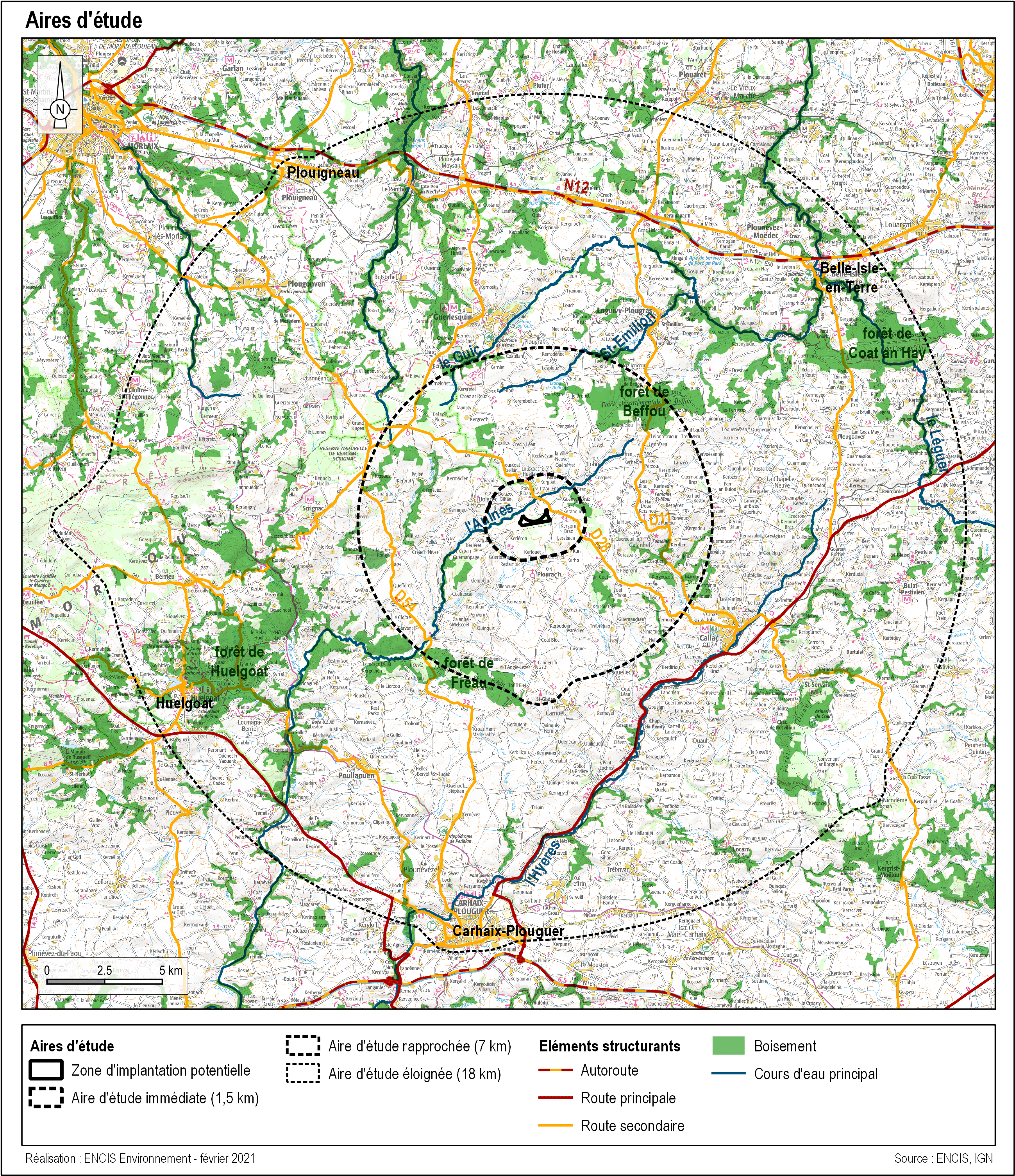Landscaping study

This study localizes the project in its general landscaping and heritage context. Initially, landscape units are described to better understand the organization of the area and its components (relief, river system, urban development, land use, etc.) and to characterize the landscapes, their identity and their formation over time. The wind context will also be described with a view to detecting any covisibility and saturation issues.
This initial phase will conclude with a summary of the issues and recommendations for the design of the wind project in accordance with the landscape concerned. On this basis, siting scenarios (the general dynamics and volume of the project) and technical variants (location, model and height of the wind turbines, service roads and the routing of connections) will be proposed then studied. Each variant will be assessed using photomontages with regard to the landscaping modifications they would occasion.
What approach to adopt?
When developing a wind project, the landscaping issue is of the utmost importance and is dealt with in the impact assessment in the form of a case study: “landscape and heritage”. Its main aims are to:
- Determine whether the landscape in question can accommodate wind turbines and how;
- Prepare a landscaping project;
- Measure its visual effects.
For this study, independent landscape architects are engaged to define the best possible insertion of the wind farm into the landscape. Visual simulations are created using the photomontages from specific vantage points to determine the positions likely to create the least impact.
The initial survey (1st study phase) was carried out in 2020 and 2021. The variants (phase 2) were studied in the first half of 2022.
